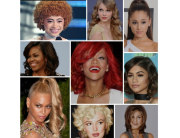Color Shade Scale
The Fischer–Saller scale, is used in physical anthropology and medicine to determine the shades of hair color. The scale uses the following designations: A (very light blond), B to E (light blond), F to L (blond), M to O (dark blond), P to T (light brown to brown), U to Y (dark brown to black) and Roman numerals I to IV (red) and V to VI (red-blond).
Black Hair
Black hair is the darkest hair color. It has large amounts of eumelanin and is denser than other hair colors.
Brown Hair
Brown hair is the second most common human hair color, after black. Brown hair is characterized by higher levels of eumelanin and lower levels of pheomelanin. Of the two types of eumelanin (black and brown), brown-haired people have brown eumelanin; they also usually have medium-thick strands of hair. Brown-haired girls or women are often known as brunettes.
Chestnut hair is hair color that is a reddish shade of brown hair. In contrast to auburn hair, the reddish shade of chestnut is darker. Chestnut hair is common among the native peoples of Northern, Central, Western, and Eastern Europe.
Auburn Hair
Auburn hair ranges along a spectrum of light to dark red-brown shades. The chemicals which cause auburn hair are eumelanin (brown) and pheomelanin (red), with a higher proportion of red-causing pheomelanin than is found in average brown hair. It is most commonly found in individuals of Northern and Western European descent. It can also be the result of a mutation in the melanocortin 1 receptor gene.
Red Hair
Red hair ranges from light strawberry blond shades to titian, copper, and completely red. Red hair has the highest amounts of pheomelanin, around 67%, and usually low levels of eumelanin. At 1–2% of the west Eurasian population, it is the least common hair color in the world. It is most prominently found in the British Isles and in Udmurtia. Scotland has the highest proportion of redheads; 13 percent of the population has red hair and approximately 40 percent carry the recessive redhead gene.
Blond Hair
Blond (sometimes blonde for women) hair ranges from pale white (platinum blond) to dark gold blond. Strawberry blond, a mixture of blond and red hair, is a much rarer type containing the most pheomelanin. Blond hair can have almost any proportion of pheomelanin and eumelanin, but has only small amounts of both. More pheomelanin creates a more golden or strawberry blond color, and more eumelanin creates an ash or sandy blond color. Blond hair is most commonly found in Northern and Western Europeans and their descendants but can be found spread around most of Europe. Studies in 2012 showed that the naturally blond hair of Melanesians is caused by a recessive mutation in tyrosinase-related protein 1 (TYRP1).
In the Solomon Islands, 26% of the population carries the gene; however, it is absent outside of Oceania.
Photo by Ato Aikins on Unsplash







Add Comment